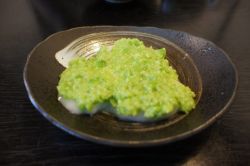
April 29, 2010
Spring Pottery Festival
Originally published on metropolis.co.jp on April 2010 If you’ve grown tired of the latest collection from Daiso and want some one-of-a-kind pottery, head to Mashiko in Tochigi. The town’s annual Spring Pottery Festival runs until May 5, giving locals and outsiders alike a chance to display their latest works. With up to 600 tents vying for attention, […]
By Metropolis
Originally published on metropolis.co.jp on April 2010

Photo by Lisa Gay
If you’ve grown tired of the latest collection from Daiso and want some one-of-a-kind pottery, head to Mashiko in Tochigi. The town’s annual Spring Pottery Festival runs until May 5, giving locals and outsiders alike a chance to display their latest works. With up to 600 tents vying for attention, it’s a fascinating—and unintimidating—place to browse and see what catches your eye.
Galleries and studios line Mashiko’s streets, and even if you don’t intend to buy anything, a coffee break at one of the many café-cum-gallery spaces is a fantastic way to pass the time. Staff will usually bring out hand-crafted pottery with your order—and the mug is likely to be far better than the coffee.
Mashiko itself is a recent phenomenon: it took an outsider, world-renowned potter Shoji Hamada, to seal its reputation as one of the most vibrant and creative pottery towns this side of the industrial revolution. The consummate Japanese potter, Hamada was deemed a National Living Treasure in the ’50s and was a major figure in the revival of folk art.
“Mashiko is young and diverse,” says Euan Craig, an Aussie transplant making a living creating pottery from a woodfire kiln, “and it allows outsiders to come into a traditional pottery town. There are a lot of first-generation potters from elsewhere, as well as foreigners, because it’s so open.” Since traditional potters in Japan are usually born into the trade, Mashiko offers an offbeat alternative.
To get the most out of what the town offers, come on a weekday—not only will you avoid the weekend hordes from Tokyo, you’ll be able to wander around and chat with potters, many of whom have interesting stories to tell.
By train: take the JR Tohoku line to Oyama and change to the Mito line, heading for Shimodate. From there, transfer to the private Moka line to Mashiko. The trip takes roughly 3hrs and costs ¥2,360. On Saturdays, the Moka line operates a steam train leaving 10:37am from Shimodate, which costs an extra ¥740. Pottery classes can be arranged in a variety of locations via the tourist office housed in the station.







